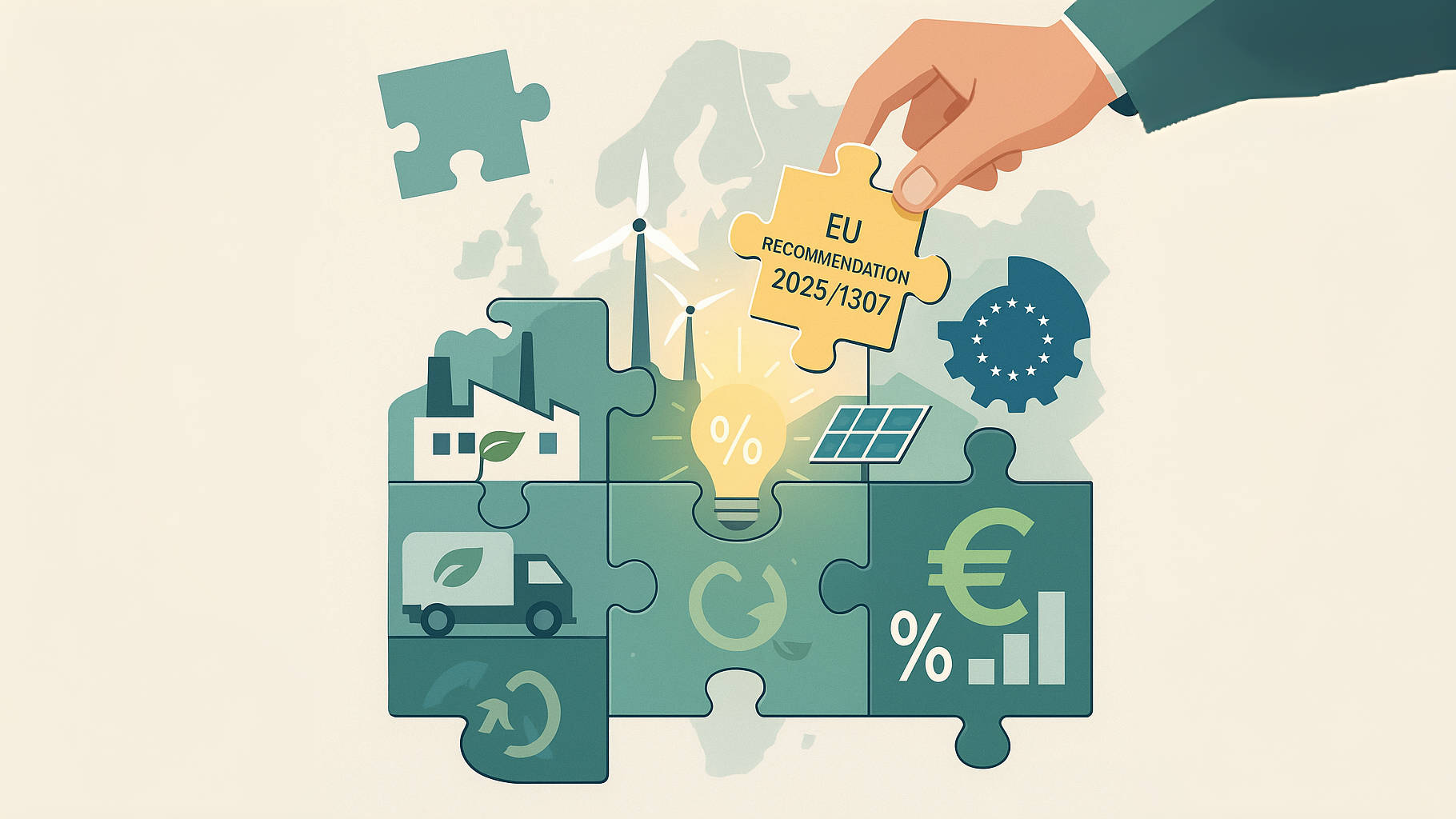-
The European Commission has published a Recommendation on tax incentives to support the Net-Zero Industry Pact.
-
According to data from the European Commission, the EU must increase its annual investments related to the energy transition in energy, industrial innovation, and transport systems by approximately €480 billion during the current decade.
-
The EU recommends that Member States apply fiscal instruments such as accelerated depreciation and tax credits to support the decarbonisation of industry.
18 July 2025
On 2 July, the European Commission presented Recommendation (EU) 2025/1307, calling on Member States to introduce and design “tax incentives to contribute to the objectives of the Net-Zero Industry Pact” with the goal of “supporting clean investments” — that is, investments in manufacturing capacities that use clean technologies, in the demand for such technologies, and in industrial decarbonisation. While the Recommendation is not binding, the Commission “invites Member States to inform the European Commission, no later than 31 December 2025, of the measures introduced.”
This Recommendation marks a fundamental shift in the EU’s industrial and climate policy. Far from being an isolated measure, it is part of a broader economic strategy that includes the Competitiveness Compass (January 2025) and the Net-Zero Industry Pact (February 2025).
The most significant aspect of this transformation is that, with this Recommendation, the EU is shifting from a predominantly regulatory stance to one of actively facilitating green investment. Historically, European climate policy has relied on regulatory frameworks and direct subsidies. Now, the Commission aims to make tax incentives a key tool for stimulating private investment. It’s akin to changing the well-known phrase “polluter pays” to “non-polluter pays less tax.”
This need for investment is crucial to achieving the EU’s ambitious decarbonisation and competitiveness goals. It is estimated that the EU must increase its annual investments related to the energy transition in energy, industrial innovation, and transport systems by approximately €480 billion in this decade compared to the previous one. As this figure far exceeds public financing capacity, the Commission proposes leveraging the catalytic power of tax incentives. The objective is for Member States’ tax systems to “send clear signals to the market that favour business models based on clean industries, thereby enabling large-scale mobilisation of private capital.”
The Recommendation reminds that these incentives “should achieve their intended effects with minimal cost, be well-targeted, easy for companies and administrations to understand and apply, not be applicable to investments in fossil fuel infrastructure or fossil-fuel-consuming machinery, and should provide timely and certain support to companies making investment decisions in clean assets and technologies.”
The Tax Mechanisms: Accelerated Depreciation and Tax Credits
Specifically, the Recommendation proposes the use of two fiscal tools: accelerated depreciation and tax credits, highlighting their potential value for specific sectors such as the automotive industry—particularly company cars—which are key to decarbonising the entire industrial value chain.
Accelerated Depreciation: Immediate Liquidity for Innovation
Accelerated depreciation allows companies to deduct the cost of their productive assets more quickly than under traditional depreciation. This doesn’t mean paying less tax overall, but rather deferring taxes, thereby freeing up immediate liquidity. Within the accelerated depreciation methods, the most advantageous is immediate deduction, which enables the full cost of the asset to be deducted in the same fiscal year as the investment. Alternatively, discretionary or flexible depreciation allows companies to choose the optimal time to apply the deductions, maximising tax benefit according to their forecasted taxable profits.
Tax Credits: Direct and Refundable Support
The tax credits proposed in the Recommendation offer direct financial support by immediately reducing the amount payable in taxes. Calculated based on actual spending on eligible investments, these credits introduce significant flexibility: if they cannot be used in the current fiscal year, they can be carried forward for up to four years and, if still unused after that period, may even be reimbursed by the Member State. Moreover, they are encouraged to be applicable to a broader range of taxes, not just corporate income tax. This design is especially beneficial for companies with low initial profitability or undergoing intensive investment phases, such as industrial start-ups, SMEs, or large groups transitioning toward more sustainable models.
To specifically promote the strengthening of the European industrial base and the creation of capacity in clean technologies, the tax credits include the following adapted features:
-
Maximum aid: tax credits may reach up to €150 million per project (outside assisted areas), or up to €350 million in assisted areas.
-
Aid intensity: the maximum aid intensity is 15% of eligible costs, with higher percentages for SMEs and projects in assisted areas, potentially reaching up to 35%.
-
Strategic incentive: larger credits are available for projects that reduce “high dependence on a single third country” or are considered “strategic projects” under specific EU regulations, such as the Critical Raw Materials Act or the Net-Zero Industry Act.
This initial approach to Recommendation (EU) 2025/1307 highlights a significant shift in European strategy: from regulatory control to fiscal activation as a lever to transform the production model. The emphasis on industrial autonomy and the design of tax incentives aligned with climate goals presents both new opportunities and demands for companies and institutions. In our next article, we will address decarbonisation from a full value chain perspective, along with our recommendations aimed at the business sector.

